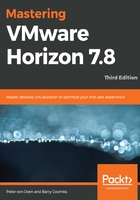
VDI versus server-based computing (SBC) – what are the differences?
So, what are the differences between these technologies and VDI, if any at all?
SBC is a technology that has been around for some time. In fact, you could probably trace its roots back as far as the 1950s, to the mainframe technology that was designed to deliver centralized compute power to run a set of applications, with users connecting to the applications using a green-screen terminal, which was pretty much just a screen with a keyboard.
Fundamentally, SBC has not changed that much and still runs applications centrally, albeit today, it runs on servers rather than a mainframe, and end users connect using some form of end point terminal. So, in that case, it's not that different to VDI in that you are connecting remotely to applications that are running on server infrastructure hosted in the data center. Or is it?
Let's look at delivering applications first. The difference between VDI and SBC is that with SBC, the applications are installed and run on the actual servers themselves, using a multi-user version of the application to create individual application sessions for each unique end user. The end user would connect to their own individual, separate, and protected session of that application, instead of connecting to an instance of an operating system containing the applications, as they would with VDI. Since everything is running in the data center, users would connect to the session via a terminal or thin client. In fact, SBC is sometimes referred to as thin-client computing.
The following diagram provides an overview of how applications are delivered using SBC/ Remote Desktop Services (RDS):

Using the SBC model, you can also deliver hosted desktop sessions in the same way. This time, instead of connecting to a separated, protected individual application session, the user now connects to a separated, protected individual session of the server's operating system. One thing to note here is that the end user is essentially running a server-based operating system session such as Windows Server 2016, rather than a Windows 10 desktop session.
At the end of the day, which technology you choose to deploy comes down to your use case, and which technology makes the most sense from both a feature and cost perspective. You may well end up with a hybrid, with the different methods delivering desktops and applications based on different departments within your organization, all of which have distinct requirements.